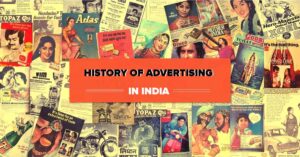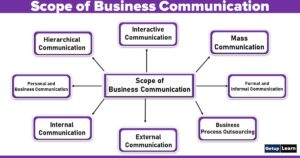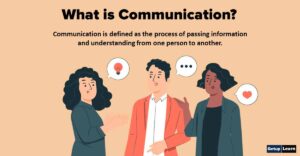Table of Contents
What is the History of Radio?
Radio programs, radio programs, or radio shows is a segment of content intended for broadcast on radio. Radio programs may be a one-time production or part of a periodically recurring series. A single program in a series is called an episode.
Radio is indebted to two other discoveries for its birth-telephone and the telegraph. These three technologies are very closely related. In fact, long-distance electronic communication had existed since the middle of the 19th century.
The telegraph communicated messages through a series of long and short clicks. Cables across the Atlantic Ocean connected even the far-distant United States and England by using this technology.
By the 1870s, telegraph technology was used to develop the telephone which could transmit a person’s voice over the same cables used by its predecessor (telephone).
Guglielmo Marconi, an Italian inventor, spent most of his working life in England where he introduced many of the first uses of wireless telegraphy to European navies. In 1896 he was awarded the official patent for the radio by the British Government.
His radio apparatus is widely considered to be the savior of over 700 people when the Titanic sank in the sea in 1912.
Broadcast Technologies
Let’s discussed broadcast technologies with some examples:
- Amplitude Modulation (AM)
- Frequency Modulation (FM)
- Digital Radio Mondiale (DRM)
Amplitude Modulation (AM)
AM refers to ‘amplitude modulation’, a mode of broadcasting radio waves by varying the amplitude of the carrier signal in response to the amplitude of the signal to be transmitted. AM signals can be detected with simple equipment.
Another advantage of AM is that it uses a narrower bandwidth. AM broadcasts occur in the medium wave frequency range – the standard broadcast band of 530 to 1700 kHz.
Frequency Modulation (FM)
Edwin Armstrong invented the FM radio during the 1930s. He won a patent for FM radio in 1933. The aim was to overcome noise interference in AM broadcasts. The sound level of broadcasting in FM radio is three times better than in AM.
Digital Radio Mondiale (DRM)
Mondiale being Italian and French for “worldwide” is a set of digital audio broadcasting technologies designed to work over the bands currently used for AM broadcasting. Digital Radio Mondiale is also the name of the international non-profit consortium designing and implementing the platform.
DRM can deliver FM-comparable sound quality on frequencies below 30 MHz which allows for very long-distance signal propagation.
Types of Radio Broadcasting
Let’s discuss types of radio broadcasting which are given below:
- Public Service Broadcasting
- Commercial Radio
- Community Radio
- Ham Radio
- Internet Radio
Public Service Broadcasting
Public Service Broadcasting (PSB) is financed and controlled by the public and for the public. In principle, PSB is neither commercial nor state-owned and free from political interference. AIR and BBC are some examples of public service broadcasting services.
Commercial Radio
Commercial radio stations are owned and managed by private enterprises. Their survival is based on airing advertisements. Generally, commercial radio gives importance to entertainment programs like comedy talks, music programs, and celebrity chats.
Red FM, Radio Mango, and Club FM are some examples of commercial radio stations.
Community Radio
It is a geographic-specific and audience-specific radio broadcast in FM mode. It serves populations in far-flung areas, coastal areas, or in some areas where people live together as a community.
Community Radio facilitates individuals, groups, and communities to share their experiences and is considered a participatory development communication initiative. These radios preserve local language and culture, traditions, and social norms.
The first community radio in Kerala, Radio DC 90.4 MHz Community FM was inaugurated on 6th January 2005. It is a non-commercial community radio station administered by the DC School of Management and Technology (DCSMAT), located in KINFRA Film and Video Park, Kazhakoottam, Thiruvananthapuram.
It is the first internet radio to be started in an Indian Business School and the only private Community Radio Station in Kerala. Later Radio Mac fast of Thiruvalla, Radio Mattoli of Wayanad, Radio Benziger of Kollam, Radio Media Village of Changanacherry, and Jan Vaani FM of Kannur came into existence.
Ham Radio
Amateur Radio (Ham Radio) is a popular hobby and service in which licensed Amateur Radio Operators (Hams) run the communication equipment. Amateurs operate radio as a hobby with no monetary benefits.
They often provide essential communications services when regular channels are unavailable due to natural disasters or other disruptive events.
Internet Radio
Internet radio (also known as web radio, net radio, streaming radio, e-radio, online radio, etc.) is an audio service transmitted via the Internet. Internet radio services are usually accessible from anywhere in the world if an Internet connection is available.
Radio Maska is India’s first live internet radio station that provides Bollywood music 24/7. As on date 30 November 2014, All India Radio is live-streaming its four channels on the Internet.
Radio Programmes
Radio broadcasting is teamwork that involves a combination of creativity, technology, and social mission.
For a better understanding of the practical aspects of radio production, one should know about the program types, their characteristics, qualities of program producers,s and those who work behind the production process.
These are types of radio programs, Radio programs can be categorized into two broad categories:
Types of Radio Programs
Let’s discuss the types of radio programs in briefly:
News Programs
- News Bulletin
- Radio Newsreel
- Radio Documentaries or Features
- Current Affairs Programs
- Talks
- Discussions
News Bulletin
News bulletins have assumed increasing importance in radio broadcasting in recent years. In the early days of radio, there was seldom more than one bulletin a day. Many stations today have several long bulletins interspersed with hourly or even half-hourly news summaries.
News bulletin is usual to give the most important story first and the least important story last. The two main factors you have to consider are the overall order or balance of the bulletin and the pace. But the news editors have the freedom to re-order stories to add variety and balance to the bulletin as a whole.
Radio Newsreel
Radio Newsreel is a news magazine program on radio covering major current news issues, broadcast once or twice a week. It is a combination of relevant sound cuts on current affairs with a brief 67 introductions and a conclusion by the narrator.
Recorded actuality and such other features as interviews with people can also be included in radio newsreels.
Radio Documentaries or Features
Documentaries are based on real people and issues. Radio also has this format. Radio documentaries have only human voices, music, and sound effects.
So a radio documentary is a program devoted to covering a particular topic in some depth based on real sounds and real people and their views and experiences. They are based on facts and are presented in an attractive and dramatic manner.
Current Affairs Programs
As the title suggests, matters of day-to-day life featuring people in all walks of life are placed in this category.
Talks
The radio talk is neither a lecture nor a public address. Generally, an expert is invited to speak 7-8 minutes on a subject of current interest. This is followed by a talk between him and an anchorperson. Such programs usually last for 25-30 minutes. The main purpose here is to give a detailed view of an important issue.
Discussions
The discussion program provides a platform for the exchange of ideas. More than one person is invited to take part in a discussion on the pattern of the round-table conference. Every participant shares his/her views. Radio discussions are produced when there are social or economic issues that may be controversial.
The presenter plays the role of the moderator.
Non News Programs and Entertainment Programs
- Musical Programs
- Radio Drama
- Docudrama
- Skit
- Phone in Programs
- Radio Bridge
- Jingle
Musical Programs
When we talk about radio, the first thing that comes to our mind is music. Music on radio includes signature tunes, musical sound effects, musical interludes, and theme music.
All India Radio has been playing a very important role in the propagation and preservation of all genres of music such as film songs, light music, classical music, and folk music.
Radio Drama
Radio dramas are presented through dialogues. A radio play has three components: human voice, music, and sound effects. The voice of the actors, music, and sound effects can create any situation in a radio play.AIR organizes drama festivals every year.
Docudrama
A docudrama (documentary drama) features a dramatized reenactment of actual events. A docudrama strives to adhere to known facts. Dialogues may include the actual words of real-life persons. For example, the “Gandhi Margam” program uses quotations from Gandhiji’s writings and presents them dramatically.
Skit
Skits are much shorter than plays and can be one or more scenes from a play. In radio, skits are constructed around fun on occasions of important social events. “Kinjanavarthamanam”, “Kandathum Kettathum”, “Kalikalam” and “Vazhivilakku” are examples of radio skits.
Phone in Programs
This is live interactive programming where the listener and the presenter talk to each other. The program has more listener satisfaction as his involvement is acknowledged immediately. Such presentations need advance publicity so that the listeners get ready to air their grievances or requests.
The News Service Division of AIR broadcasts the weekly phone-in program ”Public Speak” every Monday at 9:30 pm.
Radio Bridge
‘Radio Bridge‘ means connecting different stations throughout the country or even foreign countries. In this technique, an expert sitting at a Chennai studio can interact with the common man/expert in the Delhi studio. This format was first used by All India Radio during elections.
Jingle
It has been proved that a musical message is often more memorable than a spoken word. A jingle is a small song or music piece used for advertising, promotion, or similar activities. Radio station promos are also produced as jingles, a form of sound branding.
Radio Programme Production
Due to constant changes in technology, the techniques of radio production keep on changing. But the basics remain the same. To grasp this complex process, let’s divide radio broadcasting into five distinct stages:
- Pre Production
- Production
- Post Production
- Mixing
- Transmission
- Feedback
Pre Production
During the pre-production stage, we identify story topics, characters, sounds, and scenes. Developing the ideas for the program and researching to gather background information materials are the two steps at this stage.
The research for collecting background information is called formative research since it helps form the idea and format of the program. It is during this stage that we identify the people participating in the program, the sound/voice to be used, and the properties and logistics required.
The outline script which details the program is prepared at this stage. A rundown sheet that gives day-by-day and hour-by-hour information on recording schedules may also be developed.
Production
Production in radio programming is basically recording the sound. It may occur indoors or outdoors. They are called ‘studio production’ and ‘field production’ respectively. While recording sound the producer shall ensure the quality of sound, perfection of recording, and reduction of noise or interruptions.
Microphones, recorder units, headphone sockets, standard batteries, recording media, power supplies, headphones, etc. are some of the devices we use in field recording.
Post Production
Editing and mixing are the activities at the post-production stage of a radio program. Editing for radio is to prepare a program by starting with some raw sound elements and making a finished product to be broadcast. The first step involves the selection of the required voice elements for the final production.
Decide and select the background sounds, sound effects, or music that is to be included. Also, identify the portion where it is to be included. The next phase is the preparation of a cue sheet where we note down the chronological list of voices and all other related elements for the final mix.
Now assemble the final product as per the cue sheet.
Mixing
It is the combination of the balance and control of the amplitude of multiple sound elements. In analog, the mixing process is done in real-time, that is, while the tape is rolling at speed. This involves raising and lowering the volume of the various tracks as they roll by, to create the fade-ups and the fade-downs in the right spot.
In digital production, the producer sets levels individually for each track.
Transmission
For the propagation and interception of radio waves, a transmitter and receiver are employed. A radio wave acts as a carrier of information-bearing signals. Digital radio uses a transmission system in which the signals propagate as discrete voltage pulses, that is, as patterns of numbers.
A digital radio broadcast offers compact-disc-quality reception and reproduction on the FM band and FM-quality reception and reproduction on the AM band.
Feedback
Radio feedback is the best way to get connected and stay connected with the listeners. It gives an opportunity to have an ongoing dialogue with the most regular users and can judge the result of the presented programs. Hence it can be considered as a tool that produces valuable information across all radio departments.
Radio Program Presentation
Presenting is easy in principle. All you have to do is to talk, but have you ever thought about the difficulty of doing this continuous talking? The fundamental principle in radio presentation is the harmonious unification of the other sound elements with your voice.
Apart from the quality of the voice of the speaker, pacing, tone, and choice of words are all important. Hence the presenter needs to remain compelling, composed, and confident.
- Qualities of a good Radio Presenter
- Radio Newsreader
- Radio Jockey
Qualities of a good Radio Presenter
As a radio presenter, you are always speaking to an imaginary listener over the microphone. You can only do this with constant practice. You need to find out what kind of a presenter you are.
You need to find out what your comfort zone is, what your strengths and weaknesses are as a presenter and you will still need to work on both.
Let us examine some criteria that may seem essential for a good radio presenter:
-
Be Prepared and Avoid Rambling: The more prepared you are for any presentation, the more smoothly it will progress and the more professional you will appear.
Read thoroughly any text that you are going to present on air to rule out uncomfortable struggling to present a word that causes confusion in pronunciation. Rambling on nothing in particular is one of the biggest mistakes that presenters make.
-
Try to inject some humor and lightness: Even if your topic is serious, make an effort to lighten it up by injecting humor or light-hearted comments. This will help you to give a “human” quality to the program which will bring your listeners closer to you.
-
Listen and learn: Listen to lots of different styles of radio presenters, both on local and national radio. Identify what sounds good and what doesn’t sound so good.
-
Record every bit of your output and listen back to it and analyze it: What sounded good? What sounded ambiguous? Ask some others to listen to your presentation and get their opinions. Comments of a radio expert would be helpful in improving your voice articulations.
- Good radio voice: Voice is the tool of the radio presenter. Hence good radio voice must have strength and clarity. There are certain essential requirements for a good radio voice such as rhythm, pronunciation, emotion, fluctuation etc.
Radio Newsreader
Radio newsreaders read the news on radio stations. Good newsreaders may have solid training in writing, reporting, and digital media techniques. They must have excellent oral communication skills and a passion for news and media.
The best voice for radio news reading is natural and relaxed. Here are some tips that may increase the efficiency of a radio newsreader:
- Before you go on air, do some exercises to free up your jaw and tongue.
- If you are planning to read from a script, practice aloud until you feel confident. Pay special attention to difficult words and foreign names.
- Practice your pace and rhythm. Are you speaking too fast or too slow? Remember to pause and breathe naturally. Ask someone to give you feedback.
- Underline key words, mark pauses (with “/” or another symbol) and write phonetic pronunciations for foreign words.
- If you make a mistake, don’t panic. If it is a big error-one that could cause confusion or misunderstanding – apologize and correct it. Otherwise, take a breath and carry on. Don’t draw attention to stumbles.
Radio Jockey
Radio jockey or RJ has been with us for a century. But then they are familiar to us as radio announcers. With the advent of FM channels, the radio announcers suddenly became radio jockeys or RJs. Although they are required for all radio channels, a radio jockey is usually related to FM.
These channels are a relatively new medium and have gone through a lot of changes since their formation. A new FM style of expression and delivery has developed along with a sweet mid-to-heavy voice in an entertaining mode.
A radio jockey should have:
- Pleasing voice and aptitude to speak sensibly.
- Good command over spoken language.
- Knowledge of local dialects.
- The ability to befriend the listeners.
- Solid knowledge of technology and familiarity with the equipment for radio transmission.
New Trends in Radio
Radio listeners can now gain access to stations on the web and across the country that too even while they travel, thanks to the emerging technology of connected cars. The connected car will have apps like Pandora and MOG (these are online music services and blog networks) to listen to radio programs.
The selling point of radio is that it is free. In the future, that proposition will not hold strong in the minds of listeners. News and weather updates, as well as, celebrity gossips can be delivered more efficiently through in-car apps.
Once the personalized, on-demand music experience takes hold, traditional radio may increasingly lose listener interest. Social media and internet integrated programming are also getting popularity among radio listeners around the globe.
Radio stations are effectively using the services of Cloud mapping sites, online file sharing and storage facilities, online recorders, etc. All these trends are making changes in the traditional face of the radio.
FAQs About Radio Programs
What are the types of broadcast technologies?
These are the types of broadcast technologies:
1. Amplitude Modulation (AM)
2. Frequency Modulation (FM)
3. Digital Radio Mondiale (DRM).
What are the types of radio broadcasting?
The following are the types of radio broadcasting:
1. Public Service Broadcasting
2. Commercial Radio
3. Community Radio
4. Ham Radio
5. Internet Radio.
What are the stages of radio program production?
The following are the stages of radio program production:
1. Pre Production
2. Production
3. Post Production
4. Mixing
5. Transmission
6. Feedback.

















